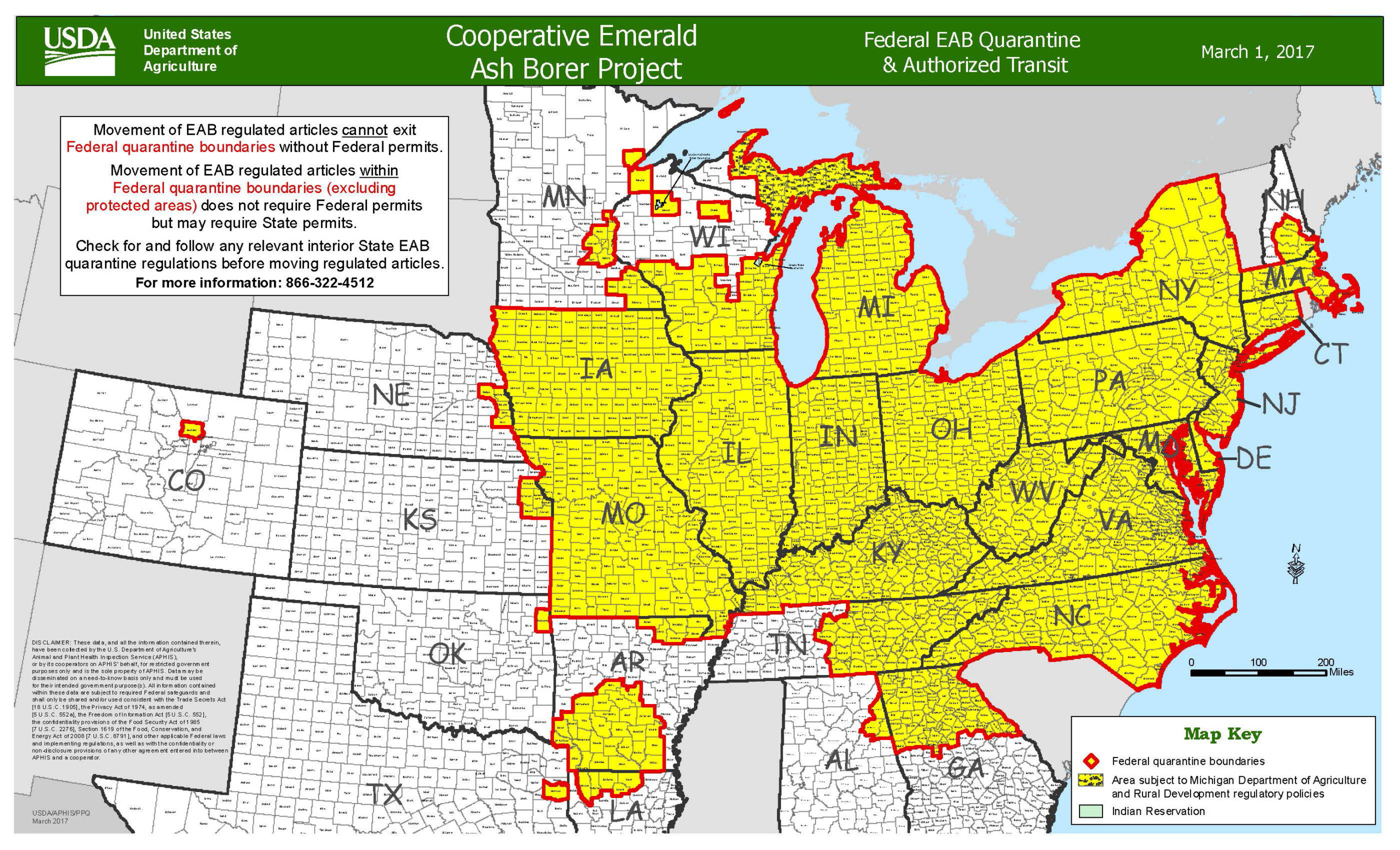Emerald Ash Borer Prevention & Treatment
Emerald Ash Borer

Have you noticed your Ash trees struggling this year? If so, they are most likely being impacted by the deadly Emerald Ash Borer (EAB). The EAB is an invasive species that has impacted tens of thousands of trees in our area. We have already removed countless infested trees from Rockville, Olney, Potomac, Bethesda, Gaithersburg, McLean, Arlington, DC, and surrounding areas. If you live in MD, DC, or VA and have Ash trees on your property, it is highly likely that they are already infested.
At this time, there are only two options for addressing the EAB; Treatment or Full Removal. Call us today and have one of our Certified Arborists provide a full tree assessment,Free of Charge.
What is the Emerald Ash Borer?

Emerald Ash Borer (EAB) is an invasive beetle that was discovered in southeastern Michigan near Detroit in the summer of 2002. The adult beetles nibble on ash foliage but only causes minor damage. The larvae feed on the cambium (inner bark), disrupting the tree's ability to transport water and nutrients - in essence, starving the tree from the inside out.
It is believed that the EAB arrived in the United States on wood packing material carried in cargo ships or airplanes originating in its native Asia. EAB can be found in approximately 25 states around the country, including Maryland, DC and Virginia. Since its discovery, the EAB has killed tens of millions of Ash trees in the eastern US and regulatory agencies such as the USDA have had to enforce quarantines and fines to prevent potentially infested ash trees, logs or firewood from moving out of infested areas.
How can it be treated?
Ash trees that have been deemed reasonably healthy by a Certified Arborist should be proactively treated for EAB. This can be accomplished by using foliage, trunk and/or root feedings along with direct injections. For Ashes that have been heavily impacted (or are
already dead), full removal is often necessary because as a tree loses structural integrity (in dying state); the safety for homes, vehicles, pets and people becomes compromised.
Signs of EAB:

Upside down ‘D’ shaped exit holes on bark

Bark may start flaking; turning tan/gold (later stage).
How to Identify an Ash Tree:
The leaf is a compound opposite leaf.

The bark is a diamond weave texture.

Where is EAB a problem:
The EAB is currently found throughout the North Eastern US and spreading fast.

If you have any questions or requests, please feel free to contact us at 301-580-6023 or use the button below to fill out our online form!
Contact Us
